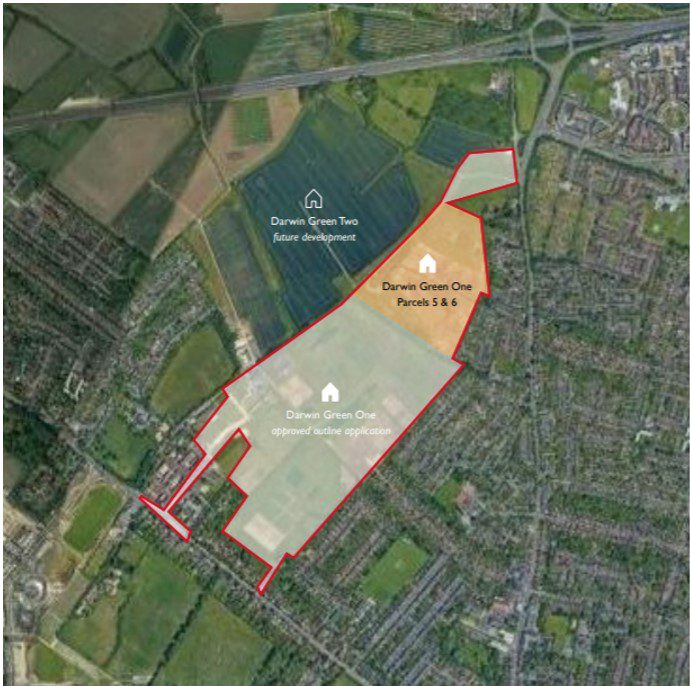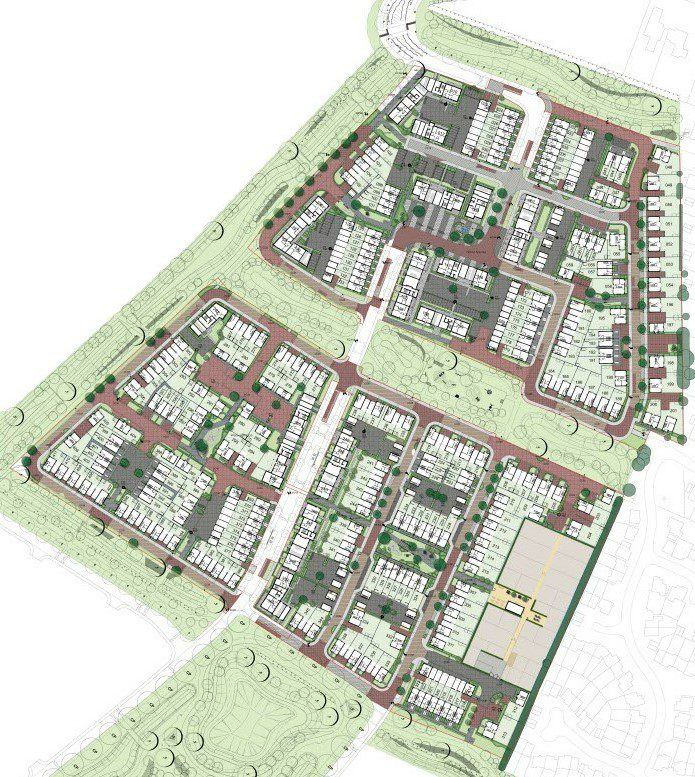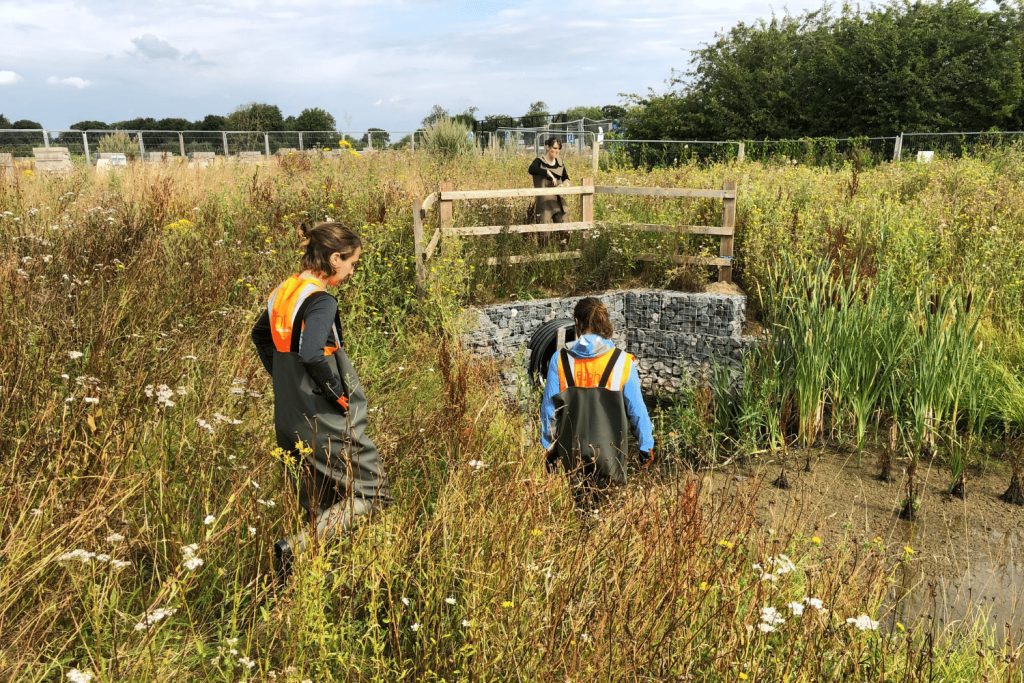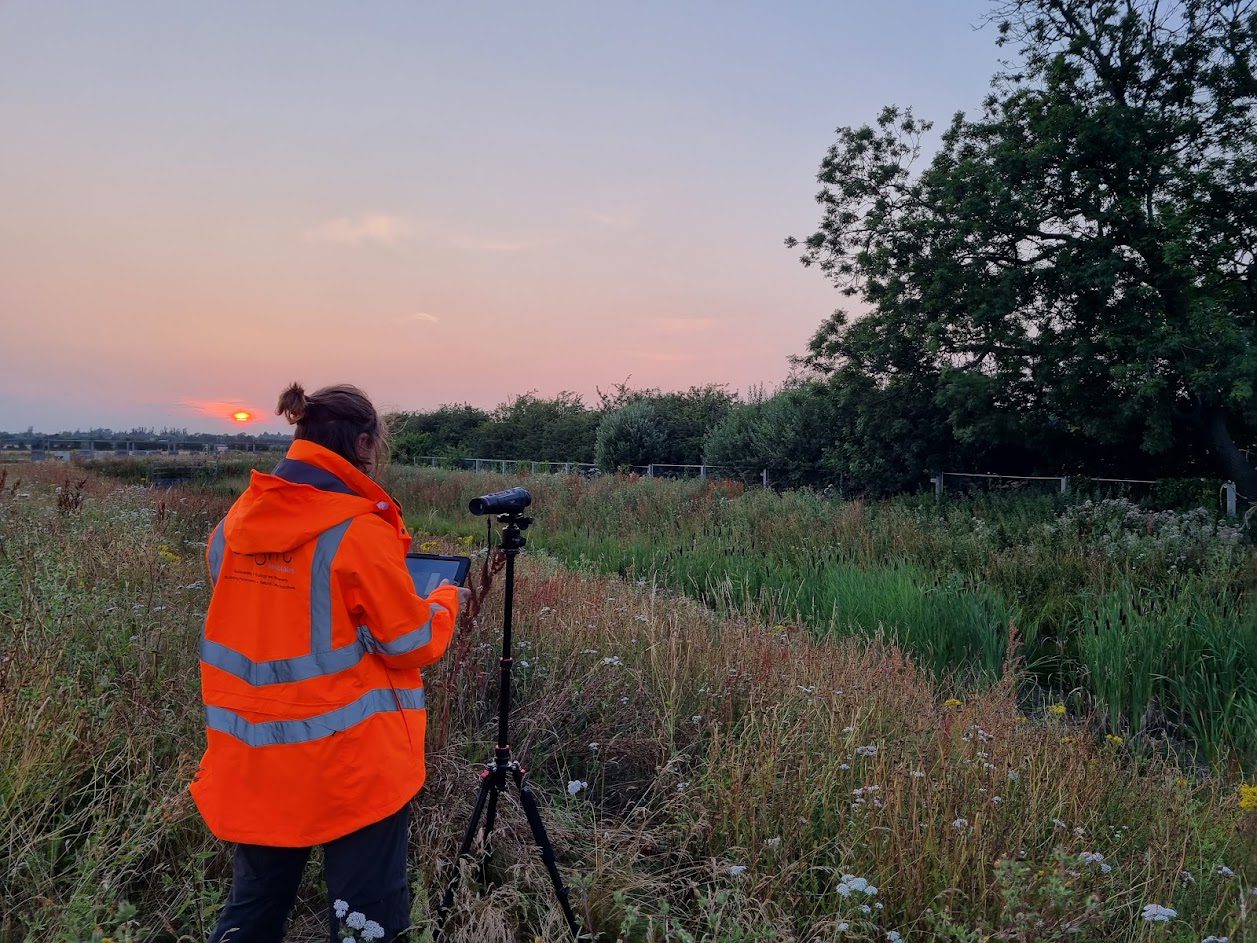One of our Ecologists setting up our thermal imaging camera on a dusk emergence bat survey. This piece of equipment allows us to record bats emerging from features in the dark. In this case, we surveyed for the presence of roosting bats within a mature ash tree onsite which had a woodpecker hole. On this occasion, no bats were recorded roosting within the mature tree.
Introduction
From the approval for 1,593 units in North West Cambridge, Darwin Green aims to be an area for much-needed new homes, a primary school, community facilities and retail units. This area spans across 81,706m2 and is a huge area for a diverse range of habitats and protected species. As Cambridgeshire is such an ecologically rich area, Barratt & David Wilson Homes were keen to ensure that the protection, mitigation and enhancement of biodiversity in the area was well considered in the project’s application to the local council.
The Challenge
Barratt & David Wilson Homes partnered with the Eight Versa team to carry out the necessary ecology surveys throughout Darwin Green One, Parcels 5 & 6. Due to the complexity of the project, there were a lot of ecological constraints to consider. It was paramount that we looked at each constraint in isolation so that a thorough assessment of all species in the area were taken into account.
This included a variety of surveys that were considered in the project’s application for approval:
- – Phase 1 Habitat Survey
- – Great Crested Newt HSI Survey
- – Great Crested Newt eDNA Survey
- – Breeding Birds Survey
- – Bat Surveys
- – Badger Surveys
- – Water vole Surveys
- – Tree Surveys

Darwin Green One, Parcels 5 & 6 where our team carried out the Ecology Surveys.
It was important to be part of the full planning process and so Eight Versa were engaged at the pre-planning, post-planning and implementation stage. This meant that our ecology team could work closely with the client on how best to maximise the biodiversity value of the area throughout the different stages of the project.
The Impact
We worked with the client to ensure pragmatic solutions were provided for each of the ecological considerations. Retaining and enhancing the existing habitats to the best of their ability was of upmost important to Barratt & David Wilson Homes, and so our recommendations and supervision were carefully considered. For example, the landscape proposal was enhanced by creating a vital wildlife corridor for a variety of species.

Darwin Green landscape masterplan demonstrating the wildlife corridor.
After including several of our surveys, recommendation reports and management plans Barratt & David Wilson Homes had their project approved by unanimous decision. The quality of the submission was praised by the Chair as “the best ever brought to this committee for a major application”. Eight Versa were proud to work to such a high standard and it be recognised as a key part of this planning application.
The Future
As the development moves to the construction stage, our ecology team will be working with a variety of contractors to educate and supervise the ecological management plans of this site. By offering ‘toolbox talks’ to the different stakeholders on site we will provide insight into what species and habitats to look out for, and how to act in a variety of scenarios. Our advisory work throughout the implementation of the ecological plans means that the project can deliver on their biodiversity enhancement features outlined in their application.

Our Ecology team during a water vole survey on the site. Water voles are a protected species with well-established populations across Cambridge. Surveying for water voles involves wading through the banks of wet ditches searching for evidence of their presence, such as latrines and feeding stations. This proved to be hard work for our ecology team, due to the large number of ditches on this site, dense vegetation, and hot weather. Nevertheless, we managed to establish that water voles were indeed present onsite, and used our survey results to inform appropriate management, mitigation and enhancement recommendations for the development.





